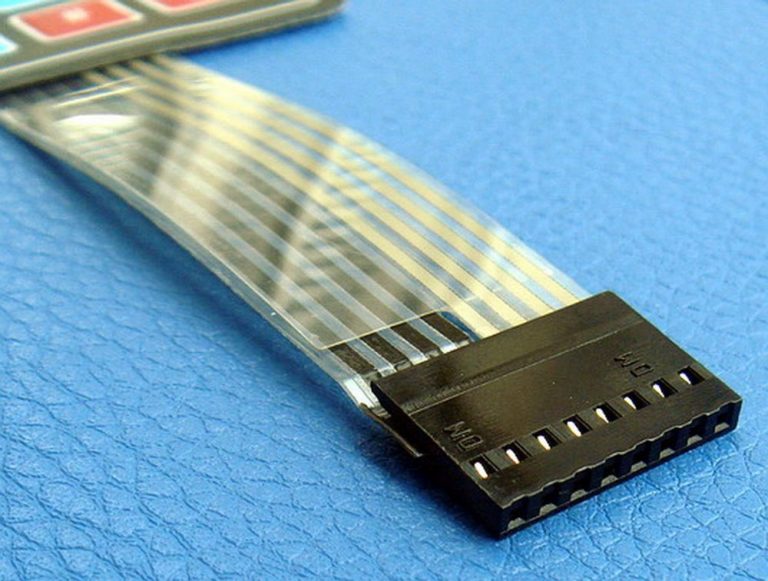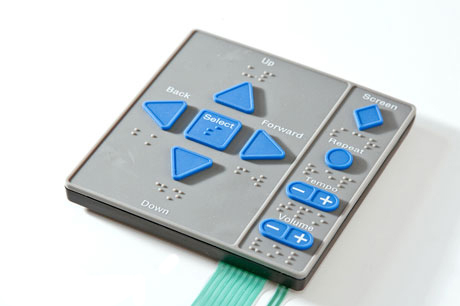Comprehending the Importance of Membrane Switches in Interface
Membrane switches are essential parts in the layout of effective user interfaces, helping with not just performance yet additionally boosting aesthetic charm and customer interaction. Their one-of-a-kind functions, such as resistance to ecological aspects and personalized designs, make them appropriate for a diverse range of applications throughout numerous sectors. As we discover the future fads and numerous advantages associated with Membrane innovation, it becomes clear that these buttons are greater than just parts; they stand for a convergence of technology and practicality. The implications of this modern technology on customer experience are worth checking out even more.
What Are Membrane Buttons?

The spacer layer, which includes adhesive properties, permits the separation of the circuit layer from the overlay, making sure that the switch continues to be in a non-activated state until pressed. When stress is related to the overlay, it presses the spacer layer, connecting the gap and finishing the circuit in the underlying layer. This design not only lowers the physical room required for traditional mechanical buttons yet also enhances the toughness of the device, as Membrane switches are generally resistant to dirt, moisture, and other environmental elements.
Frequently located in applications ranging from customer electronic devices to medical tools, Membrane switches are indispensable to modern-day technology, offering a straightforward and efficient interface that aligns with contemporary layout needs.
Advantages of Membrane Switches
While countless button modern technologies exist, Membrane Switches deal distinctive benefits that make them particularly desirable in numerous applications. Among the key advantages of Membrane buttons is their portable layout, which enables space-saving implementations in devices where actual estate is limited. Their thin profile not just improves visual appeal however also assists in light-weight building and construction.
One more substantial benefit is their resistance to ecological aspects. Membrane buttons are normally secured versus dampness, dust, and pollutants, making them excellent for use popular atmospheres, such as medical gadgets and industrial devices. This resilience prolongs the life expectancy of the switch, lowering upkeep costs and enhancing dependability.
In addition, Membrane buttons can be customized to meet certain design requirements, integrating special graphics and shades that enhance customer communication. Their tactile comments alternatives can additionally be tailored to offer a gratifying customer experience. Furthermore, Membrane buttons are cost-efficient, specifically in high-volume applications, as they can be generated successfully.
Applications in Various Industries

In the customer electronics sector, Membrane switches are widespread in devices such as microwaves, cleaning devices, and push-button controls. Their responsive responses and visual options improve individual experience while giving a streamlined, modern-day look. Additionally, automotive suppliers make use of Membrane buttons in control panel controls and infotainment systems, where area is restricted, and user involvement is crucial.
Moreover, the industrial industry leverages Membrane switches in control panels for machinery and devices, permitting instinctive procedure in commonly rough environments. Their resistance to chemicals and dampness ensures long life and dependability in these applications. In general, the versatility of Membrane Switches adds considerably to their widespread use, making them crucial in different technical domain names.
Layout Considerations for Membrane Buttons

When developing Membrane switches, numerous vital factors to consider should be thought about to make sure ideal capability and user experience. Firstly, the selection of materials is important; choosing sturdy, high-quality substrates can boost the button's long life and resistance to environmental elements such as dampness and temperature changes.
Second of all, the layout of the graphic overlay should focus on clearness and ease of use. Symbols and message must be clear, and the layout needs to facilitate user-friendly interaction (membrane switches). In addition, tactile feedback is crucial; including a responsive dome or various other mechanisms can enhance the individual experience by providing physical confirmation of activation
One more crucial variable is the switch's electric performance. Developers have to ensure that the conductive traces are appropriately made to lessen resistance and avoid signal interference. This includes evaluating the required actuation pressure and making sure compatibility with the electronic elements they will certainly user interface with.

Future Trends in Membrane Technology
As modern technology remains to advancement, Membrane switches are positioned to advance dramatically, driven by technologies in products and producing methods. One emerging fad is the incorporation of innovative materials, such as conductive inks and adaptable substrates, which improve durability and lower the total weight of Membrane switches. These products not only improve the responsive action yet also permit the design of switches that can withstand harsher environmental conditions.
Additionally, the combination of touch-sensitive technologies is transforming conventional Membrane Switches right into even more interactive user interfaces. Capacitive touch sensors embedded within Membrane button panels can provide a more receptive and user-friendly customer experience, aligning with the expanding demand for sleek, contemporary designs in customer electronic devices.
Furthermore, developments in printing techniques, such as digital and 3D printing, make it possible for quick prototyping and customization of Membrane buttons. This flexibility permits suppliers to respond extra rapidly to market demands and consumer choices.
Lastly, sustainability is ending up being a substantial emphasis, with suppliers discovering green products and processes. As these trends unravel, the future of Membrane technology assures improved functionality, aesthetic charm, and ecological obligation, strengthening their duty in sophisticated interface throughout numerous industries.
Conclusion
In final thought, Membrane Switches represent a crucial element in the style of customer interfaces, incorporating performance with visual adaptability. As advancements in technology continue, the development of Membrane switches is expected to more improve customer interfaces, driving technology and enhancing use in a significantly intricate technical landscape.
Membrane switches are indispensable components in the layout of efficient user interfaces, assisting in not only performance however additionally improving aesthetic allure and user interaction.Membrane Switches offer as a vital component in numerous customer interfaces, assisting in a seamless communication in between customers and digital tools.While many button technologies exist, Membrane Switches deal distinctive advantages that make read more them specifically preferable in numerous applications.Moreover, Membrane buttons can be customized to meet specific layout demands, integrating unique graphics and shades that boost user interaction.In final thought, Membrane Switches stand for an important part in the layout of individual interfaces, integrating performance with aesthetic versatility.